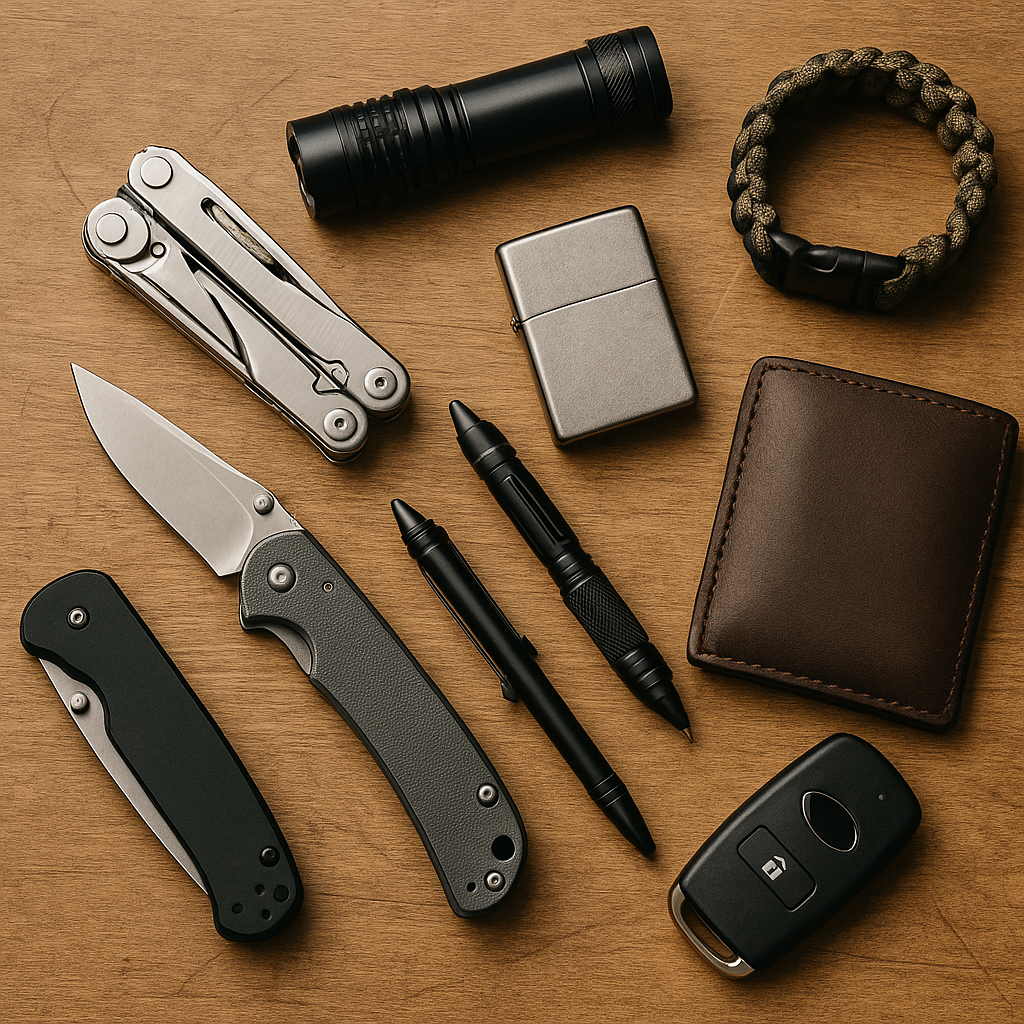Creating your own EDC kit (Everyday Carry) is one of the smartest steps you can take toward real preparedness.
It’s not about copying someone else’s setup — it’s about building a kit that fits your lifestyle, your environment, and your daily risks.
Let’s go step by step and design your ideal carry.
🔹 Step 1 – Define Your Environment
Your environment determines your EDC.
A city commuter, a first responder, and an outdoor enthusiast all have different needs.
Ask yourself:
-
Where do I spend most of my time?
-
What emergencies am I most likely to face?
-
What can I realistically carry every day?
➡️ If you live in a city, focus on compact, discreet tools like a multitool, power bank, and small flashlight.
➡️ In a rural or outdoor setting, you might include a larger knife, paracord, and a firestarter.
🔹 Step 2 – Start with the Core Essentials
Every solid EDC begins with a few key tools:
✅ Multitool or pocket knife – for small repairs and emergencies.
✅ Flashlight – never rely on your phone light alone.
✅ Lighter or firestarter – even urban dwellers can need this.
✅ Tactical pen or regular pen – because writing is communication.
✅ First aid basics – a bandage, wipes, or pain relief pill.
✅ Wallet and emergency cash – physical ID and money still matter.
It’s not about how much you carry — it’s about carrying what matters.
🔹 Step 3 – Adapt It to You
Your EDC should evolve with your routine.
If you often travel, add a portable charger and USB cable.
If you drive long distances, keep a seatbelt cutter or window breaker.
If you work in an office, your tools should blend in and remain discreet.
Adaptability is key — what you carry should make life easier, not heavier.
🔹 Step 4 – Test and Refine
Don’t just build your kit — use it.
Test how each item performs, and replace what you never touch.
A bloated EDC becomes a burden. A smart one becomes invisible — part of your daily rhythm.
Remember: preparedness is a process, not a purchase.
🔹 Step 5 – Maintain and Inspect Regularly
Check your gear monthly:
-
Batteries charged?
-
Blades clean and oiled?
-
First aid items fresh?
An EDC kit only works if it’s ready when you need it.
🔹 Final Thoughts
Building your own EDC kit is about personal readiness.
You’re not just carrying tools — you’re carrying peace of mind.
Start simple. Stay consistent. Refine as you learn.
📘 For more guides, checklists, and survival strategies, get your pocket manual Disaster Survival Guide by Tony Baldo — available now on Amazon:
👉 https://www.amazon.com/Disaster-Survival-Guide-Hurricanes-Earthquakes/dp/B0FP244YQG/
SEO Keywords: EDC kit, build your EDC, everyday carry essentials, how to make an EDC kit, preparedness tools, survival gear, Tony Baldo, Disaster Survival Guide

